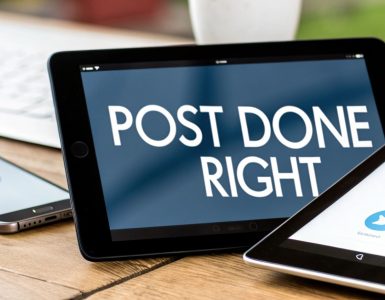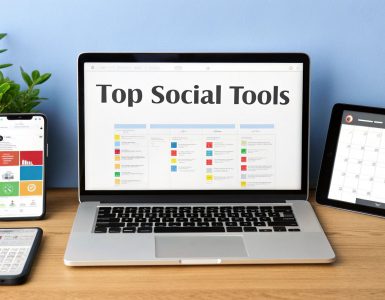Tired of the endless scramble for what to post next on social media? A well-structured content calendar is the key to transforming your social media strategy from chaotic and reactive to organized and effective. It allows you to plan ahead, maintain a consistent brand voice, and strategically align your posts with your marketing goals. But knowing you need a calendar and finding the right one are two different challenges. With so many formats and platforms available, choosing the best fit for your workflow can be overwhelming.
This article cuts through the noise. We will dive deep into the best social media content calendar examples, showcasing templates from leading platforms like Hootsuite, CoSchedule, and Buffer. We won't just show you what they look like; we'll provide a strategic breakdown of each one. You'll get a clear look at their structure, ideal use cases, and actionable takeaways you can apply immediately. For each example, you’ll find screenshots and direct links to help you explore them further.
Our goal is to help you find a system that streamlines your content planning, whether you need a simple monthly overview or a detailed, collaborative platform. And while a great calendar organizes your organic content, for those looking to expand into paid promotion, a dedicated Meta Ads Creative Guide can be an invaluable resource to plan your ad content effectively. Let’s get started and find the perfect calendar for your needs.
1. EvergreenFeed
EvergreenFeed is not a traditional calendar template but a powerful, automated system that fundamentally redefines how you manage and execute your content schedule. It stands out by moving beyond static planning to dynamic, intelligent content delivery. This platform is an exceptional choice for marketers who want to put their evergreen content strategy on autopilot, ensuring a consistent, high-value presence across social channels with minimal manual effort.
Where many social media content calendar examples focus on manual planning, EvergreenFeed automates the execution. By integrating directly with Buffer, it allows you to create "buckets" of categorized content-like blog posts, user-generated content, quotes, or promotions. You then set a unique schedule for each bucket on each social profile, and the platform intelligently randomizes and publishes posts for you. This approach transforms a static calendar into a living, breathing content engine.
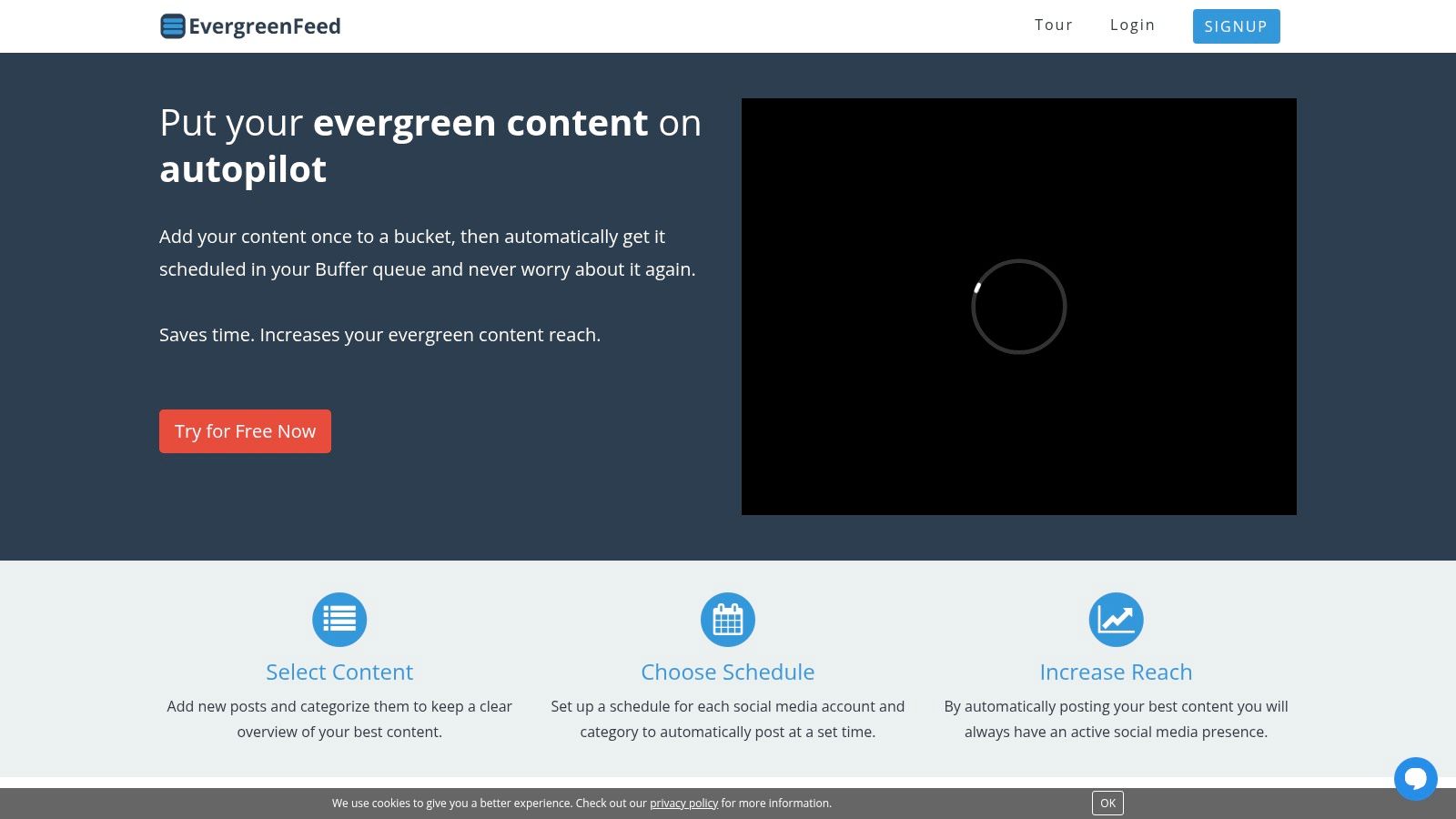
Strategic Analysis: The Power of Content Buckets
The core strength of EvergreenFeed lies in its content bucket system. This feature enables a sophisticated, theme-based content strategy that is nearly impossible to maintain manually.
Strategic Takeaway: By categorizing your content into buckets (e.g., Educational, Promotional, Community, Behind-the-Scenes), you guarantee a balanced content mix. This prevents your feed from becoming overly promotional or one-dimensional, fostering better audience engagement and trust.
Key Features and Practical Applications
- Automated Content Rotation: The platform automatically recycles your evergreen posts, ensuring your best content gets continuous visibility without repetitive manual scheduling. Testimonials report saving over seven hours per week.
- Customizable Scheduling: Assign different posting frequencies for different content types. For instance, you can schedule two educational posts daily, one promotional post weekly, and three quotes per week, all on autopilot.
- Multi-Account Management: Manage multiple Buffer accounts from a single, intuitive dashboard, making it ideal for agencies or businesses with distinct brand profiles.
- Seamless Buffer Integration: It works in tandem with Buffer's robust scheduling capabilities, enhancing them with smart automation rather than replacing them.
Getting Started with EvergreenFeed
Accessing the platform is straightforward. EvergreenFeed offers a free-forever plan with no credit card required, allowing you to test its core functionality risk-free. This entry-level plan is perfect for individuals or small businesses looking to automate a single social profile.
For optimal results:
- Audit Your Content: Before signing up, categorize your existing evergreen content into logical themes.
- Define Your Buckets: Create buckets in EvergreenFeed that align with your content pillars.
- Set Your Cadence: Establish a balanced posting schedule for each bucket, considering your audience's behavior on each platform.
While it does require a Buffer account, the efficiency gains and strategic control it offers make it a superior solution for serious marketers.
Website: https://www.evergreenfeed.com
2. CoSchedule
CoSchedule stands out as more than just a calendar; it's an all-encompassing marketing suite designed for teams seeking a unified workflow. It centralizes social media, blog content, email marketing, and other campaign elements into a single, collaborative dashboard. This integrated approach makes it one of the most powerful social media content calendar examples for organizations aiming to align their entire marketing strategy, not just their social posts.
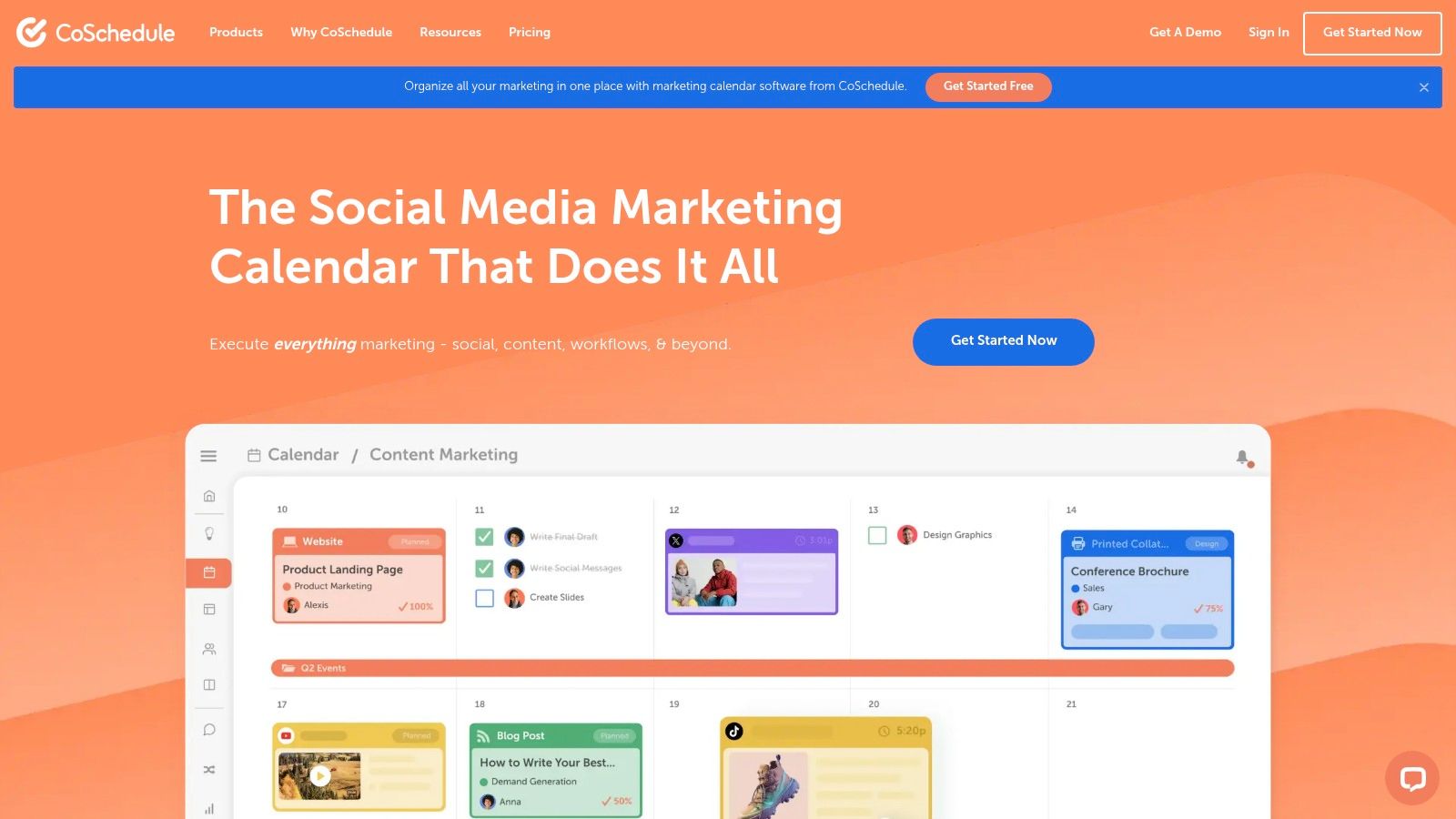
The platform is built for efficiency, allowing teams to plan, execute, and analyze campaigns without switching between multiple tools. Its drag-and-drop interface simplifies rescheduling, while built-in analytics provide immediate feedback on content performance, helping marketers optimize their strategies in real-time.
Strategic Breakdown
CoSchedule's primary advantage is its ability to provide a "single source of truth" for a marketing team. This eliminates communication silos and ensures every team member, from content writers to social media managers, has visibility into the entire marketing pipeline.
- Unified Workflow: Plan a blog post and its corresponding social media promotion schedule all within the same view. This cohesion ensures messaging is consistent across all channels.
- Team Collaboration: Features like task assignments, approval workflows, and in-app comments streamline the content creation process, reducing reliance on external communication tools like email or Slack.
- Performance Measurement: The platform’s ReQueue feature intelligently re-shares your top-performing evergreen content, maximizing its reach and engagement with minimal manual effort. Learn more about how to build a comprehensive marketing calendar on evergreenfeed.com to complement CoSchedule's features.
Pricing and Access
CoSchedule offers a tiered pricing model. A free plan is available with basic calendar and scheduling features for individuals. Paid plans unlock advanced collaboration, automation, and analytics tools, with pricing structured to accommodate growing teams and marketing agencies.
| Feature | Pros | Cons |
|---|---|---|
| Centralization | Manages all marketing activities in one unified calendar. | Can be overwhelming for users needing only a simple scheduler. |
| Collaboration | Excellent tools for team workflows and content approvals. | Key collaboration features require higher-priced plans. |
| User Experience | Intuitive drag-and-drop interface and easy-to-read dashboard. | Limited customization options on certain templates. |
| Integrations | Connects with major social platforms, WordPress, and more. | Some niche integrations may be missing. |
Website: https://coschedule.com/
3. Later
Later has carved out a niche as the go-to social media management platform for visually-driven brands and creators. While it supports a full suite of social networks, its core strength lies in its intuitive, visual-first approach to content planning. This makes it one of the best social media content calendar examples for anyone whose strategy heavily relies on platforms like Instagram, Pinterest, and TikTok, where aesthetic cohesion is paramount.
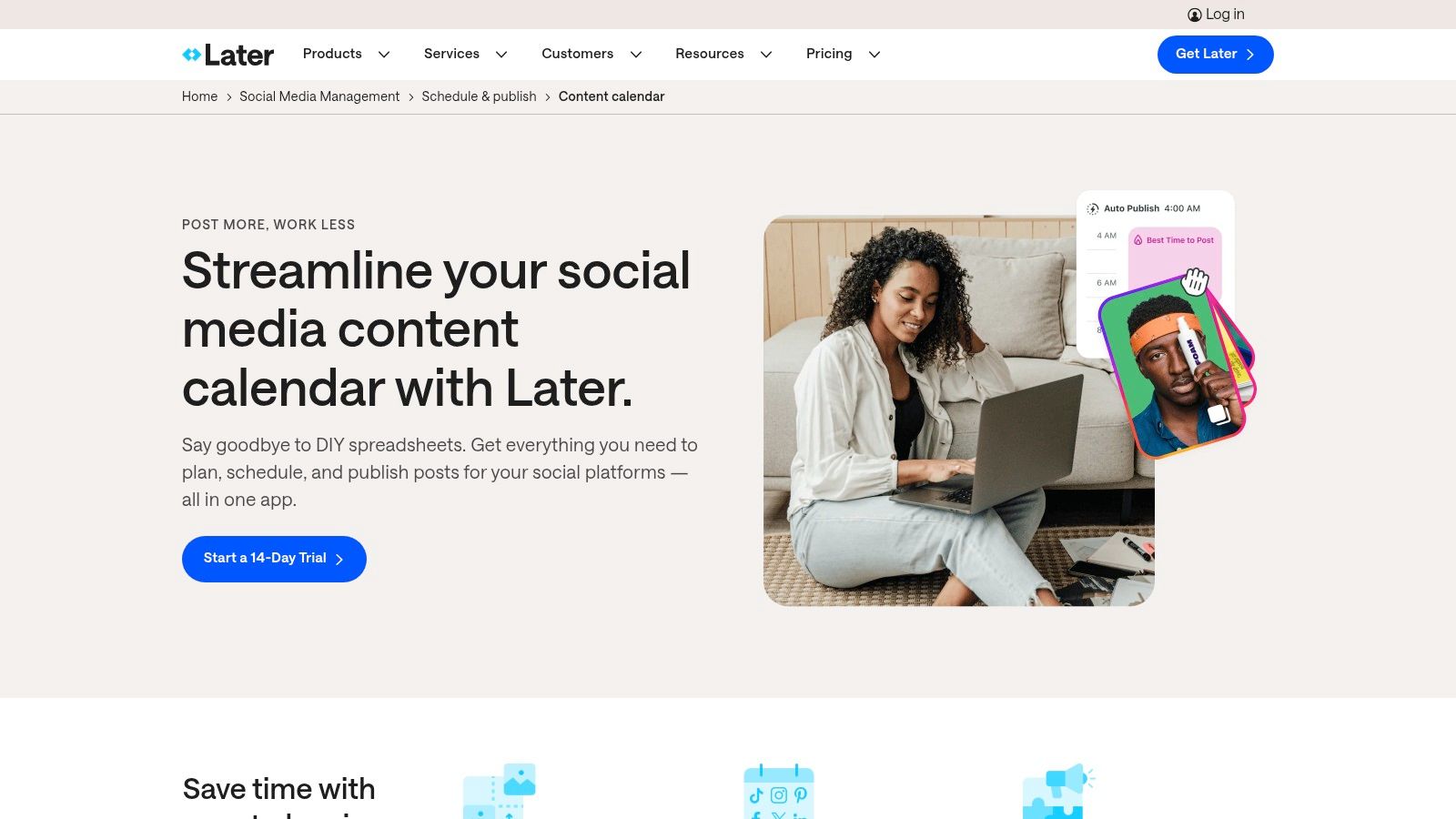
The platform is designed to mirror the user experience of visual social feeds, allowing marketers to drag and drop content to see exactly how their grid will look before posts go live. This focus on visual planning, combined with robust scheduling tools and a central media library, simplifies the process of creating a polished and consistent brand presence across channels.
Strategic Breakdown
Later’s primary advantage is its ability to transform content planning from a spreadsheet-based task into a creative, visual exercise. It empowers users to build a beautiful and effective feed, ensuring that every post contributes to a larger aesthetic narrative.
- Visual-First Planning: The Visual Planner for Instagram is a standout feature, allowing you to preview your feed's appearance. This is crucial for maintaining a specific brand aesthetic and ensuring visual flow between posts.
- Centralized Asset Management: The Media Library acts as a central hub for all your photos and videos. You can tag, organize, and even edit media directly within the platform, streamlining content preparation.
- Data-Driven Scheduling: Later analyzes your audience's activity and provides "Best Time to Post" recommendations. This feature helps maximize reach and engagement by ensuring your content is published when your followers are most active online.
Pricing and Access
Later operates on a freemium model. A free plan is available, offering basic scheduling and one social set (one profile per platform), making it ideal for individuals or small businesses just starting. Paid plans unlock more social sets, advanced analytics, team collaboration features, and higher post limits, catering to growing brands and agencies.
| Feature | Pros | Cons |
|---|---|---|
| Centralization | Excellent for managing visual assets in its Media Library. | Not as comprehensive for text-heavy or campaign management. |
| Collaboration | Team features are available on paid plans for content approvals. | Free and lower-tier plans have limited collaboration tools. |
| User Experience | Highly intuitive, visual drag-and-drop interface is easy to learn. | Analytics on the free plan are quite limited. |
| Integrations | Strong integration with Instagram, TikTok, Pinterest, and others. | Lacks some of the all-in-one marketing suite features of competitors. |
Website: https://later.com/social-media-content-calendar/?utm_source=openai
4. Hootsuite
Hootsuite is one of the pioneering platforms in social media management, offering a robust suite of tools for scheduling, monitoring, and analytics. It provides a comprehensive content calendar that allows users to plan and visualize their social media strategy across multiple networks from a single dashboard. This makes it a go-to choice for businesses and agencies looking for powerful social media content calendar examples that integrate scheduling with in-depth social listening and performance tracking.
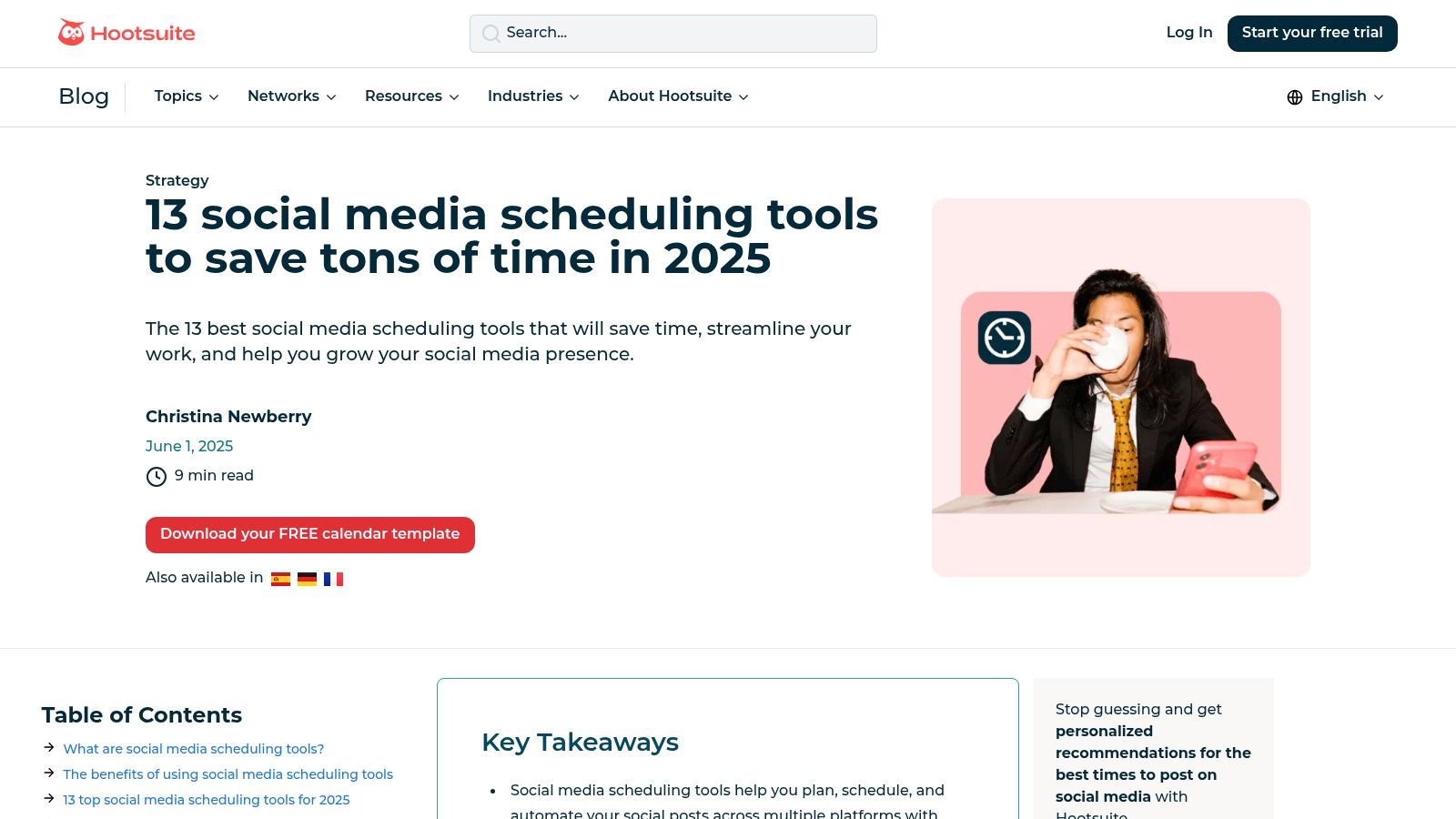
The platform is designed for professional marketers who need to manage a high volume of content and engage with their audience effectively. Its "Planner" view gives a clear overview of scheduled and published content, while features like bulk scheduling save significant time. The ability to monitor keywords, hashtags, and mentions directly within the dashboard sets Hootsuite apart as a tool for proactive community management.
Strategic Breakdown
Hootsuite’s key strength lies in its combination of publishing and monitoring capabilities. This allows teams not only to plan their content but also to react to social conversations and trends in real time, creating a more dynamic and responsive social media presence.
- Integrated Monitoring: Create custom streams to track brand mentions, competitor activity, and industry keywords. This allows for immediate engagement and turns the calendar into a hub for both planned and reactive content.
- Bulk Scheduling: The platform’s bulk composer lets users upload and schedule hundreds of posts at once from a CSV file. This is ideal for planning large-scale campaigns or populating a content calendar for weeks or months in advance.
- Team-Focused Workflow: Assign tasks, manage post approvals, and share access to social accounts without sharing passwords. Exploring the benefits of social media automation on evergreenfeed.com can help teams maximize the efficiency gains from Hootsuite’s collaborative features.
Pricing and Access
Hootsuite offers several pricing tiers, starting with a limited free plan suitable for individuals managing a few social profiles. Paid plans, including Professional, Team, and Business, unlock more advanced features like unlimited scheduling, enhanced analytics, team collaboration tools, and a larger number of social accounts.
| Feature | Pros | Cons |
|---|---|---|
| Network Support | Supports a wide range of major social media networks. | Higher pricing tiers can be expensive for small businesses. |
| Analytics | Provides robust and customizable analytics and reports. | The interface can have a learning curve for new users. |
| Collaboration | Excellent tools for team-based content approvals and tasks. | Some advanced features are reserved for enterprise-level plans. |
| Functionality | Combines scheduling with powerful social listening tools. | User interface is considered less modern than some competitors. |
Website: https://blog.hootsuite.com/social-media-scheduling-tools/?utm_source=openai
5. Sprout Social
Sprout Social is a premium, all-in-one social media management platform designed for businesses that require robust analytics, engagement, and publishing tools. Its content calendar is a core component, offering a sophisticated way to organize, schedule, and analyze social media efforts across multiple channels. This platform is one of the most comprehensive social media content calendar examples for teams focused on data-driven decision-making and streamlined audience engagement.

The platform integrates scheduling with powerful listening and monitoring features, allowing marketers to plan content while simultaneously tracking brand mentions, keywords, and industry trends. Its clean, intuitive interface makes navigating its extensive feature set straightforward, empowering teams to manage complex campaigns with precision and clarity.
Strategic Breakdown
Sprout Social’s main advantage lies in its integration of scheduling with deep analytics and engagement tools. It bridges the gap between planning content and measuring its real-world impact, providing actionable insights that inform future strategy. This makes it ideal for teams who need to prove social media ROI and optimize performance continuously.
- Integrated Analytics: The calendar works seamlessly with Sprout's analytics suite. Teams can view post-performance data directly within the calendar view, making it easy to identify successful content formats and optimal posting times.
- Team Collaboration: With features like custom approval workflows, a shared asset library, and tasking capabilities, the platform is built for team efficiency. It ensures content is consistent, on-brand, and approved before it goes live.
- Audience Engagement: The "Smart Inbox" unifies all incoming messages from various social profiles into a single stream. This allows teams to respond to comments and messages efficiently without leaving the platform, directly connecting content planning with community management.
Pricing and Access
Sprout Social operates on a tiered subscription model, with pricing that reflects its comprehensive feature set. Plans are structured per user, making it a significant investment best suited for established businesses and agencies. A free trial is available for users to explore the platform's capabilities before committing.
| Feature | Pros | Cons |
|---|---|---|
| Comprehensiveness | All-in-one suite for scheduling, analytics, and engagement. | Higher price point may be a barrier for small businesses. |
| User Experience | Clean, intuitive interface that is easy to navigate. | Some advanced features can have a learning curve for new users. |
| Analytics | Powerful, in-depth reporting and social listening tools. | Core analytics features are tied to more expensive plans. |
| Support | Excellent customer support and extensive learning resources. | The per-user pricing model can become costly for larger teams. |
Website: https://sproutsocial.com/insights/social-media-scheduling-tools/?utm_source=openai
6. Planable
Planable is a highly visual and collaborative social media management tool designed to streamline the content approval process. It positions itself as a workspace where teams can create, discuss, approve, and schedule social media posts in a remarkably intuitive environment. This strong focus on feedback loops and visual planning makes it one of the most effective social media content calendar examples for agencies, marketing teams, and brands that require meticulous content review before publishing.
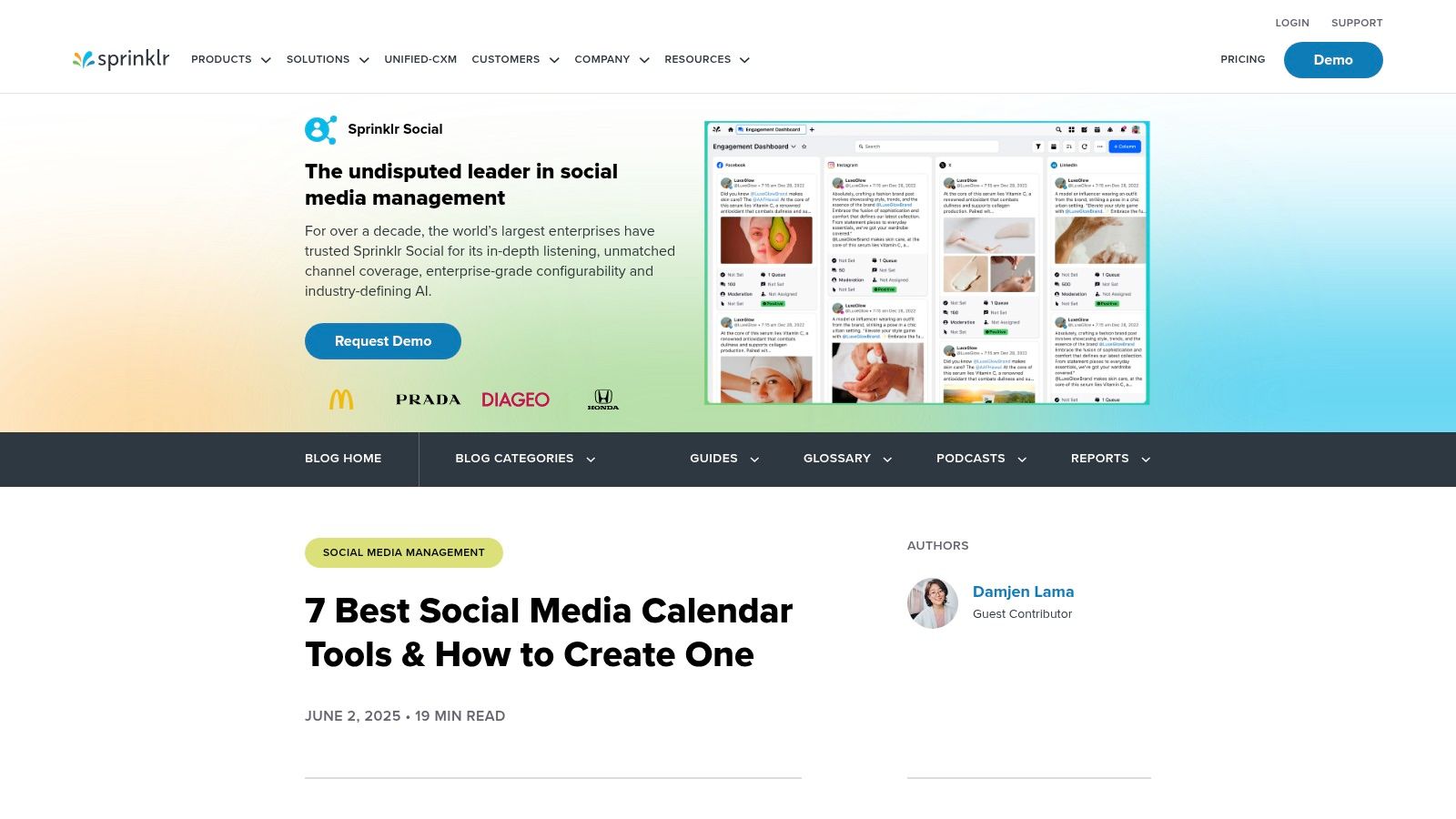
The platform’s core strength lies in its "what you see is what you get" editor, which shows posts exactly as they will appear on each social network. This eliminates guesswork and reduces errors, allowing teams to collaborate with confidence. Its real-time commenting and multi-level approval workflows are built to replace messy spreadsheets and confusing email chains.
Strategic Breakdown
Planable excels by creating a friction-free environment for team collaboration and client approvals. It is less about complex analytics and more about perfecting the content creation and review cycle, ensuring every post meets brand standards before it goes live.
- Visual-First Workflow: The ability to preview posts for Facebook, Instagram, X (formerly Twitter), LinkedIn, and other platforms directly in the calendar helps stakeholders visualize the end result, leading to faster and more accurate feedback.
- Streamlined Approvals: Multi-level approval settings allow managers to create specific workflows. For instance, a post can first be approved internally by a manager and then sent to a client for final sign-off, all within the platform.
- Centralized Workspace: Planable offers dedicated workspaces for different clients or brands, keeping all content, feedback, and assets organized and separate. This is a critical feature for agencies managing multiple accounts.
Pricing and Access
Planable provides a flexible pricing structure, including a free plan that allows users to schedule up to 50 total posts. Paid plans unlock features like unlimited posts, more users, and advanced collaboration tools, making it scalable for both small teams and large agencies.
| Feature | Pros | Cons |
|---|---|---|
| Collaboration | Exceptional real-time commenting and feedback tools. | Analytics and reporting features are less robust than competitors. |
| Approval Flow | Multi-level approvals streamline the review process effectively. | Some advanced features are locked behind higher-priced plans. |
| User Experience | Highly intuitive, with a clean and visual drag-and-drop calendar. | May lack the deep scheduling automation of other platforms. |
| Integrations | Connects seamlessly with all major social media platforms. | Fewer integrations with other marketing tools like email or CRM. |
Website: https://planable.io/
7. Buffer
Buffer is a streamlined social media management tool that excels in simplicity and efficiency. It is designed for businesses and individuals who need a reliable, no-frills platform to schedule content, engage with their audience, and analyze performance without a steep learning curve. Its clean interface and intuitive queue-based system make it one of the most accessible social media content calendar examples for those prioritizing ease of use.
The platform focuses on core functionalities: planning, scheduling, and publishing. Users can set a predefined posting schedule for each social account, and any new content added to the "Queue" is automatically scheduled for the next available time slot. This "set it and forget it" approach saves significant time for busy social media managers.
Strategic Breakdown
Buffer’s core strength lies in its user-friendly design, which strips away complexity to focus on efficient content delivery. This makes it an ideal starting point for small businesses or solo creators who need to establish a consistent online presence quickly.
- Queue-Based Scheduling: The simple queue system automates the scheduling process. Users can add content anytime via the web dashboard or browser extension, and Buffer ensures it's published at optimal, pre-set times.
- Centralized Publishing: Manage multiple social profiles (including Instagram, Facebook, X, LinkedIn, and Pinterest) from a single, uncluttered dashboard, simplifying cross-platform campaign execution.
- Actionable Analytics: Buffer provides clear, easy-to-understand analytics on post performance, helping users identify which content resonates most with their audience and refine their strategy accordingly. Learn more with this step-by-step guide to using Buffer for your social media on evergreenfeed.com.
Pricing and Access
Buffer offers a versatile pricing structure, including a generous free plan that allows users to manage up to three channels, making it highly accessible. Paid plans scale up to include more social channels, deeper analytics, and team collaboration features, catering to growing businesses and agencies.
| Feature | Pros | Cons |
|---|---|---|
| Centralization | Manages all core scheduling and publishing in one clean space. | Lacks the all-in-one project management features of larger suites. |
| Collaboration | Straightforward team member access and approval workflows. | Advanced collaboration tools are limited to higher-tier plans. |
| User Experience | Exceptionally intuitive and easy to navigate for beginners. | Less customizable than more complex platforms. |
| Integrations | Connects with all major social networks and has a useful browser extension. | Limited integrations with other marketing tools like email or CRM. |
Website: https://buffer.com/resources/social-media-scheduling-tools/
Top 7 Social Media Content Calendar Tools Comparison
| Tool | Implementation Complexity 🔄 | Resource Requirements ⚡ | Expected Outcomes 📊 | Ideal Use Cases 💡 | Key Advantages ⭐ |
|---|---|---|---|---|---|
| EvergreenFeed | Low – Setup requires Buffer account | Low – Uses Buffer API, no heavy resources | Consistent evergreen content posting; saves ~7+ hours weekly | Social media managers, content creators, small businesses focused on evergreen content | Automates scheduling, customizable buckets, free trial with no credit card |
| CoSchedule | Medium – Full marketing suite setup | Medium – Team collaboration features | Centralized marketing activities with measurable performance | Marketing teams needing all-in-one marketing & social calendar | Unified calendar, team collaboration, intuitive interface |
| Later | Low to Medium – Focused on visual scheduling | Low – Basic plan available for free | Improved visual scheduling and posting efficiency | Visual content strategists, Instagram-focused users | Visual planner, multi-platform support, best time recommendations |
| Hootsuite | Medium to High – Robust features | Medium to High – Pricing higher, resource-intensive | Comprehensive social media management and monitoring | Businesses requiring broad social network support and analytics | Wide network support, strong analytics, team collaboration |
| Sprout Social | High – Advanced tools and setup | High – Premium pricing | Deep analytics, strong engagement, and monitoring | Businesses needing comprehensive social tools and support | All-in-one platform, excellent customer support, advanced analytics |
| Planable | Low to Medium – Focus on collaboration | Low to Medium – Basic free plan | Streamlined team workflows and content approvals | Teams focusing on feedback and approval processes | Real-time collaboration, multi-level approvals, content previews |
| Buffer | Low – Simple scheduling setup | Low – Affordable with free plan | Efficient scheduling and basic analytics | Users seeking simplicity and cost-effective scheduling | Simple interface, affordable, browser extension for sharing |
Final Thoughts
We've explored a wide array of powerful social media content calendar examples, moving beyond simple templates to dissect the strategic frameworks offered by tools like CoSchedule, Later, and Sprout Social. The goal was to demonstrate that a content calendar is more than just a scheduling grid; it’s a command center for your entire social media strategy.
From the granular, campaign-focused views of Planable to the high-level, analytics-driven approach of Hootsuite, each example offers a unique methodology. The key takeaway is that the best calendar is the one that aligns perfectly with your specific workflow, team size, and strategic objectives.
Key Insights and Actionable Next Steps
To translate these examples into action, focus on the following core principles:
- Audit Your Current Process: Before adopting any new tool, map out your existing content lifecycle. Where are the bottlenecks? What takes the most time? This audit will immediately highlight which calendar features are "nice-to-have" versus "need-to-have."
- Define Your Strategic Goals: Are you focused on brand awareness, lead generation, or community engagement? Your primary goal should dictate the structure of your calendar. For instance, a lead-gen focus might require calendar fields for CTAs and landing page URLs, while a community-building strategy would prioritize tracking engagement metrics.
- Embrace Thematic Planning: As seen in several examples, organizing content around monthly or quarterly themes creates cohesion and simplifies brainstorming. This approach is not just for your own content; it helps organize collaborations, especially when sourcing content from partners or specialized creators found on UGC creator platforms.
- Integrate Analytics: A static calendar is a missed opportunity. The most effective social media content calendar examples we reviewed integrate performance data directly into the planning view. Make it a habit to review post-performance and use those insights to inform your future content schedule.
Choosing the Right Tool for Your Needs
Selecting the ideal platform from the examples provided depends entirely on your operational reality.
- For Solopreneurs and Small Teams: Tools like Buffer and Later offer streamlined, visually-driven interfaces that are perfect for straightforward planning and scheduling without a steep learning curve.
- For Marketing Agencies and Large Teams: Platforms like Planable, Sprout Social, and Hootsuite are built for collaboration. Their robust approval workflows, client-facing portals, and detailed permission levels are essential for managing multiple accounts and complex campaigns.
- For Content-Heavy Brands: If your strategy hinges on a high volume of evergreen content, a system like CoSchedule or EvergreenFeed (which specializes in this) will provide the automation necessary to maintain a consistent presence without constant manual effort.
Ultimately, the examples in this guide serve as a blueprint. Use them to identify the features and workflows that resonate with your brand. Start with a free trial, import a week's worth of content, and see how the tool feels in a real-world scenario. The right social media content calendar won't just organize your posts; it will empower you to be more strategic, efficient, and impactful.
Ready to put your evergreen content on autopilot and build a truly sustainable social media strategy? EvergreenFeed is designed to help you create and automatically recycle your best content, ensuring your profiles are always active with high-quality posts. Stop the content treadmill and start building your library today with EvergreenFeed.



